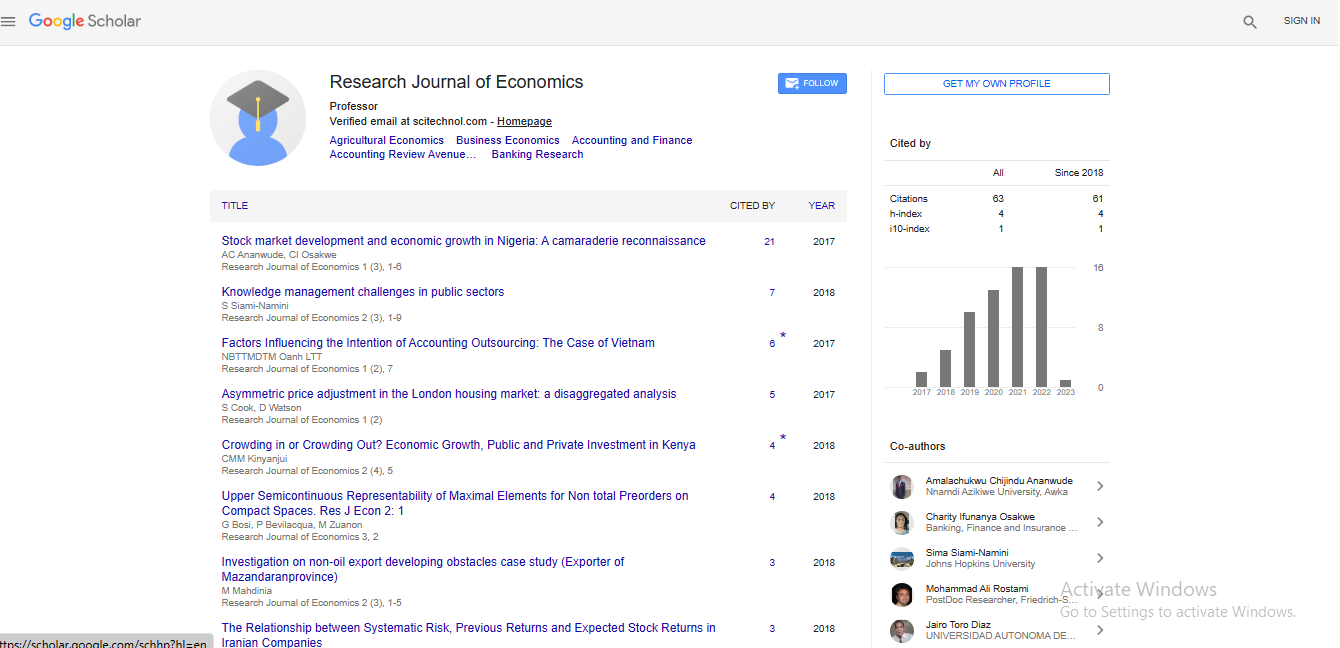Commentary, Res J Econ Vol: 8 Issue: 1
Global Marketing Administration and its Strategies
Guliyn Wenchan*
Department of Retailing and Customer Management, University of Cologne, Cologne, Germany
- *Corresponding Author:
- Guliyn Wenchan
Department of Retailing and Customer Management,
University of Cologne,
Cologne,
Germany;
E-mail: guliyn_wenchan@gmail.com
Received date: 04 November, 2023, Manuscript No. RJE-23-119233;
Editor assigned date: 06 November, 2023, PreQC No. RJE-23-119233 (PQ);
Reviewed date: 20 November, 2023, QC No. RJE-23-119233;
Revised date: 15 July, 2024, Manuscript No. RJE-23-119233 (R);
Published date: 22 July, 2024, DOI: 10.4172/RJE.1000175
Citation: Wenchan G (2024) Global Marketing Administration and its Strategies. Res J Econ 8:1.
Description
Global marketing may be described as "marketing on a worldwide scale reconciling or taking global operational differences, similarities and opportunities in order to reach global objectives”.
Global marketing is also a branch of general business administration that offers products, solutions, and services to clients on a local, national, and international scale. International marketing is the use of marketing ideas in more than one country, by enterprises operating outside of their home country, or across national borders. It is accomplished by the export of a company's product to another place, the establishment of a joint venture with another firm inside the nation, or the infusion of foreign direct investment into the country. International marketing is necessary for the growth of the country's marketing mix. The use of current marketing strategies, mix, and tools for export, relationship techniques such as localization, local product offerings, price, production, and distribution with tailored promotions, offers, website, social media, and leadership are all examples of international marketing. A global marketing and branding implementation system disseminates marketing assets, affiliate programs and materials, internal communications, newsletters, investor materials, event promotions, and trade shows to provide customers with integrated, comprehensive, and targeted communication, access, and value.
Cultural differences are one of the most difficult issues in worldwide marketing. Marketing messages that are suitable in Sweden may not be appropriate in South Korea, and vice versa. As a result, even the most standardized worldwide marketing plans require some degree of adaptability. A global or worldwide company should also be aware of key cultural and religious occasions, such as Christmas and Ramadan. Multinational firms were primarily responsible for worldwide marketing. Since the advent of the internet and ecommerce, even tiny businesses may now reach clients all over the world.
Reaching out to worldwide markets considerably increases product awareness. By selling in multiple nations, may establish a solid reputation as a globally recognized brand, giving a significant competitive edge. Furthermore, expanding the firm opens up new commercial options and, as a result, new revenue streams. Understanding all of these advantages leads many business owners to begin selling worldwide. However, there are several cultural, legal, demographic, and political variations to consider while marketing items. Creating a single marketing plan for all nations is insufficient. Global marketing is required since organization must be adaptable in order to serve customers worldwide.
This technique involves standardizing the product line, marketing, price, and other components across several nations. In the workplace, managers make the most crucial choices, and there is minimal independence in local markets. By standardizing the manufacturing process, businesses may save money on raw materials. Furthermore, developing a product marketing plan requires less investment because it is the same in all areas.
This strategy allows local offices more autonomy and is frequently based on a global perspective. It means that the corporation may have entirely diverse items all over the world that may be combined under the name and emblem of the same brand. A strategy like this helps organizations to diversify their risks and expand into whole new markets. When there is a considerable disparity between the markets with which a company works, it is used. The most well-known example is Nokia, which manufactured home appliances, mobile phones, paper goods, and a variety of other items at various points in its history. This approach entails the corporation focusing on a certain portion of the audience and producing only items for that group in all regions. Marketing, price strategy, and product line may differ, although there is usually some commonality. It is the most adaptable approach, allowing overseas offices considerable autonomy while incorporating the finest organizational decisions from the corporation.
 Spanish
Spanish  Chinese
Chinese  Russian
Russian  German
German  French
French  Japanese
Japanese  Portuguese
Portuguese  Hindi
Hindi 